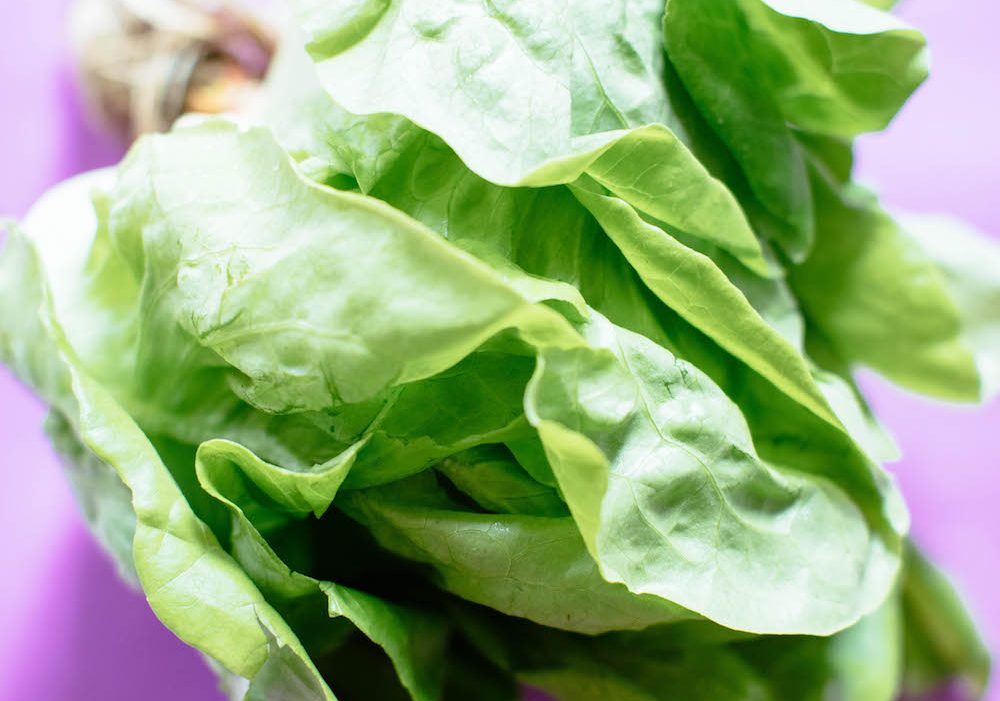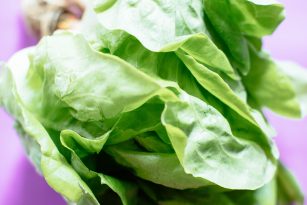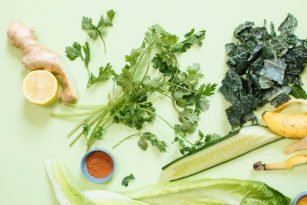Can you get enough calcium on a plant-based diet or in other sources besides milk? Yes, yes you can!
“Where do I find calcium in a plant-centric diet? What are good sources?” These are great questions and very commonly asked, use this guide to calcium as a resource to share. Calcium is a mineral that get’s a lot of attention in the media from adding it to chocolate chews, candies, to gummy bears in order to meet our daily needs — but what if we had a kitchen full of foods rich in calcium already? Calcium is a mineral required in the body for multiple processes — most importantly bone and skeletal health.
Why You Need Calcium
Calcium isn’t just needed for strong and healthy bones, though. It also plays a vital role in muscle contraction (think of our heart, a muscle!), hormonal secretion, nerve function, messaging between cells, and vascular contraction/vasodilation (i.e. blood flow). One study found that calcium actually plays a pretty important role in learning and memory (1).
Our bodies do a pretty amazing job at keeping the calcium in our blood tightly regulated, meaning no matter what, our bodies try to keep it from fluctuating. A downside to this regulation is that the mineral can be leached from our bones (creating a calcium reservoir) if we’re not externally supplying our body’s with enough of it.
So, how can we get enough if we’re eating plant-based foods or a dairy-free lifestyle? It’s simple actually.
Calcium and a Plant-Based Lifestyle
Before we chat about how and where to find calcium in food, it’s important to note who should pay special attention to calcium. Several groups of people may fall into the category of not getting enough of the nutrient from their diet or those who aren’t absorbing it properly. This includes:
- vegetarians
- vegans
- those suffering from Crohn’s or other IBD (inflammatory bowel diseases in general)
- those suffering from Celiac disease
- those with compromised gut function
- athletes
Women, as they age, are also more susceptible to the breakdown of bones, which may result in osteoporosis over time. All of the above groups can be at risk for long-term consequences of low calcium such as osteoporosis though—not just us ladies.
How Much Calcium Do You Need?
Women and men generally require anywhere between 1000 to 1300 mg per day. Of course, there are special circumstances where individuals will require more, but this range is a recommended daily intake. Listing off a dosage is all well and good, but when it comes to actually apply that into your daily diet, it can be tricky. That’s why including calcium-rich foods (listed below) throughout the day, every day, should be a priority especially for those groups of individuals I listed above.
Calcium supplements can be beneficial for those of you who require more, those who don’t consume enough in their diets, or those who are working to prevent further bone loss. Calcium can cause some pretty unpleasant digestive issues, mainly being constipation, so you don’t want to take too much. (Research says no more than 500 mg at a time (2)).
I often recommend clients who take calcium follow three rules: Take it from a great quality company, take it alongside magnesium, and take it with food. You may also want to decrease the amount of coffee and alcohol in your diet as well, as both of these increases the excretion of calcium through your restroom breaks (both ways)! Check with your doctor about specifics on how you should supplement calcium, if at all.
Does Dairy-Free Mean Calcium Deficient?
If you’re living a dairy-free lifestyle, whether by choice or by need (i.e. lactose intolerance, dairy allergy, etc.), it can be just as easy to get your daily-required amount of calcium as someone who is consuming dairy. I repeat: Dairy is not needed to get your calcium! I may even repeat it again because many commercials and the Dairy Council say it so often… you do not need to consume dairy to get your calcium. There are amazing foods to keep in mind that are both rich in calcium, dairy-free, and taste delicious.
Luckily, there are several ways to help your body increase the absorption of calcium found in plants and elsewhere, such as eating these foods alongside vitamin D and magnesium-rich foods. Avoid taking calcium or eating calcium-rich foods alongside iron and zinc (both of these minerals compete with calcium).
Top Plant Sources
Did you know that just 1 cup cooked turnip greens contains about 20% DV of calcium? A couple other notable mentions: 1 tablespoon of blackstrap molasses contains about 17% DV calcium, 1 cup of white beans is 19% DV.
Let’s talk greens. Since most of us were growing up, many of us were told and preached to “drink your milk for strong bones.” There may be some truth to that, but what about all the other amazing whole foods that contain calcium? I often have clients and readers comment on Nutrition Stripped about their confusion about where to find calcium, as they think calcium is only found in dairy—it’s not! Dark leafy greens are surprisingly good sources of calcium and a group of vegetables not to be dismissed while living dairy-free. Added bonus, green vegetables are also loaded with vitamin K, another component of healthy and strong bones.
The Calcium in Dark Leafy Greens: per 100 grams
- 26.7% DV of collard greens
- 19.7% DV of cooked turnip greens
- 9.3% DV of cooked kale
- 10% DV of bok choy
- 11% DV of mustard greens
- 12% DV of watercress
- 5% DV of swiss chard
- 9% DV of spinach
- 8%DV of okra
- 8% DV of rhubarb
- 4% DV of broccoli
More Calcium-Rich Non-Dairy Foods
- blackstrap molasses (4% DV per 1 tablespoon)
- tofu (preferably organic)
- tempeh (preferably organic)
- tahini/sesame seeds (12% DV per 2 tablespoons)
- almonds (26% DV per 100g)
- navy beans
- figs (3% DV per 100g)
- canned salmon/sardines
- seaweeds
- and other fortified products
TIP: when buying calcium-fortified or enriched foods, be sure to shake or stir the contents before using, the calcium settles to the bottom. Also, read my Guide to Nut Milks for more information on how to buy non-dairy milk and of course make your own. Try making your own dairy-free milk using one of my favorite seeds, sesame seeds or tahini which is incredibly calcium-rich and really delicious!
A Note on Oxalates
Oxalic acid, which is found in dark leafy vegetables such as those rich in calcium, bind with calcium, which may reduce the absorption in the body. The main reason to familiarize yourself with oxalate is to be aware of their relationship in calcium-oxalate kidney stones, one of the most common kidney stones. Oxalate isn’t just known for kidney stones, there’s also been conflicting cases (i.e. not enough scientific research) with oxalate and it’s connection to disorders such as fibromyalgia, arthritis, and other inflammatory diseases.
A couple ways to minimize the oxalate content and its effects on reducing the calcium absorption is to cook your greens, eat other foods rich in calcium, and drink plenty of water. If you drink green smoothies be mindful of the oxalate content in the greens you choose to use and add lemon or orange juice to your diet (fresh) if you have any issues with kidney stones. The citric acid will be protective and keep from forming new stones. The majority of us will have no issues eating these foods—so no, you can’t use “oxalates” as an excuse not to eat your greens! Visit this resource for a great chart on calcium-rich foods and their oxalate content.
Can You Get Too Much?
If you’re taking a calcium supplement—and not just getting it from plant-based foods—then, yes, you can get too much of it. A comprehensive study from Johns Hopkins University found that calcium supplementation (not getting it from the diet!) could increase the risk of coronary artery calcification, or the hardening of arteries, so watch your intake levels when going with a pill form (3).
The Bottom Line
Eating lots of greens, and making sure you get your fill of vitamin D so you can help with calcium absorption will help you get your fill of this nutrient—sans dairy. Of course, always talk to your doctor to see if you need to take a supplement if you’re going plant-based for the first time or just recently started eating in this way. It is important to talk to your doctor about this mineral so you can keep an eye on bone health together, and make sure you’re not getting too much if you do decide to take a supplement.
References:
- Ilaria Drago and Ronald L. Davis. (2016, August.) Inhibiting the Mitochondrial Calcium Uniporter during Development Impairs Memory in Adult Drosophila.
-
Straub DA. (2007, June.) Calcium supplementation in clinical practice: a review of forms, doses, and indications.
- John J.B. Anderson, Bridget Kruszka, Joseph A.C. Delaney, Ka He, Gregory L. Burke, Alvaro Alonso, Diane E. Bild, Matthew Budoff, Erin D. Michos. (2016, October.) Calcium Intake From Diet and Supplements and the Risk of Coronary Artery Calcification and its Progression Among Older Adults: 10‐Year Follow‐up of the Multi‐Ethnic Study of Atherosclerosis (MESA).







